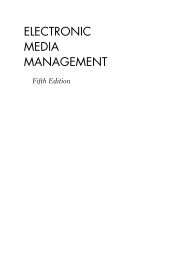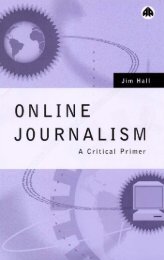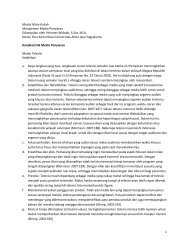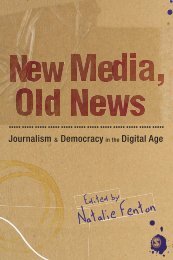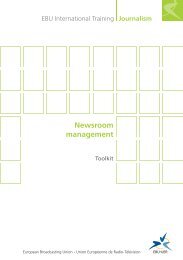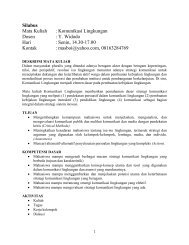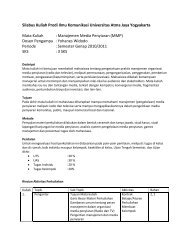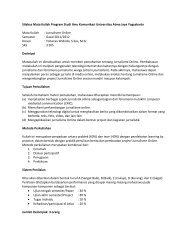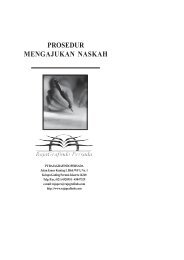Modul Mata Kuliah Journalisme Online - Ayo Menulis FISIP UAJY
Modul Mata Kuliah Journalisme Online - Ayo Menulis FISIP UAJY
Modul Mata Kuliah Journalisme Online - Ayo Menulis FISIP UAJY
You also want an ePaper? Increase the reach of your titles
YUMPU automatically turns print PDFs into web optimized ePapers that Google loves.
About the Author: Aaron Barlow teaches English at CUNY -- Brooklyn branch and, on weekends, runs his<br />
store/gallery, Shakespeare's Sister, in Brooklyn, NY. The author of The DVD Revolution: Movies, Culture,<br />
and Technology (Praeger, 2005), he is a board member and citizen journalist for ePluribus Media.<br />
ePluribus Contributors: Carol White, cho and roxy<br />
M/C Journal, Vol. 11, No. 1 (2008) - 'vote / citizen'<br />
Select Issues with New Media Theories of Citizen Journalism<br />
“Journalists have to begin a new type of journalism, sometimes being the guide on the side of the civic<br />
conversation as well as the filter and gatekeeper.” (Kolodzy 218)<br />
“In many respects, citizen journalism is simply public journalism removed from the journalism<br />
profession.” (Barlow 181)<br />
1. Citizen Journalism — The Latest Innovation?<br />
New Media theorists such as Dan Gillmor, Henry Jenkins, Jay Rosen and Jeff Howe have recently touted<br />
Citizen Journalism (CJ) as the latest innovation in 21st century journalism. “Participatory journalism” and<br />
“user-driven journalism” are other terms to describe CJ, which its proponents argue is a disruptive<br />
innovation (Christensen) to the agenda-setting media institutions, news values and “objective”<br />
reportage.<br />
In this essay I offer a “contrarian” view, informed by two perspectives: (1) a three-stage model of<br />
theory-building (Carlile & Christensen) to evaluate the claims made about CJ; and (2) self-reflexive<br />
research insights (Etherington) from editing the US-based news site Disinformation between November<br />
1999 and February 2008. New media theories can potentially create “cognitive dissonance” (Festinger)<br />
when their explanations of CJ practices are compared with what actually happens (Feyerabend).<br />
First I summarise Carlile & Christensen’s model and the dangers of “bad theory” (Ghoshal). Next I<br />
consider several problems in new media theories about CJ: the notion of ‘citizen’, new media populism,<br />
parallels in event-driven and civic journalism, and mergers and acquisitions. Two ‘self-reflexive’ issues<br />
are considered: ‘pro-ams’ or ‘professional amateurs’ as a challenge to professional journalists, and CJ’s<br />
deployment in new media operations and production environments. Finally, some exploratory questions<br />
are offered for future researchers.<br />
2. An Evaluative Framework for New Media Theories on Citizen Journalism<br />
Paul Carlile and Clayton M. Christensen’s model offers one framework with which to evaluate new<br />
media theories on CJ. This framework is used below to highlight select issues and gaps in CJ’s current<br />
frameworks and theories. Carlile & Christensen suggest that robust theory-building emerges via three<br />
stages: Descriptive, Categorisation and Normative (Carlile & Christensen). There are three sub-stages in<br />
Descriptive theory-building; namely, the observation of phenomena, inductive classification into<br />
schemas and taxonomies, and correlative relationships to develop models (Carlile & Christensen 2-5).<br />
Once causation is established, Normative theory evolves through deductive logic which is subject to<br />
Kuhnian paradigm shifts and Popperian falsifiability (Carlile & Christensen 6).



